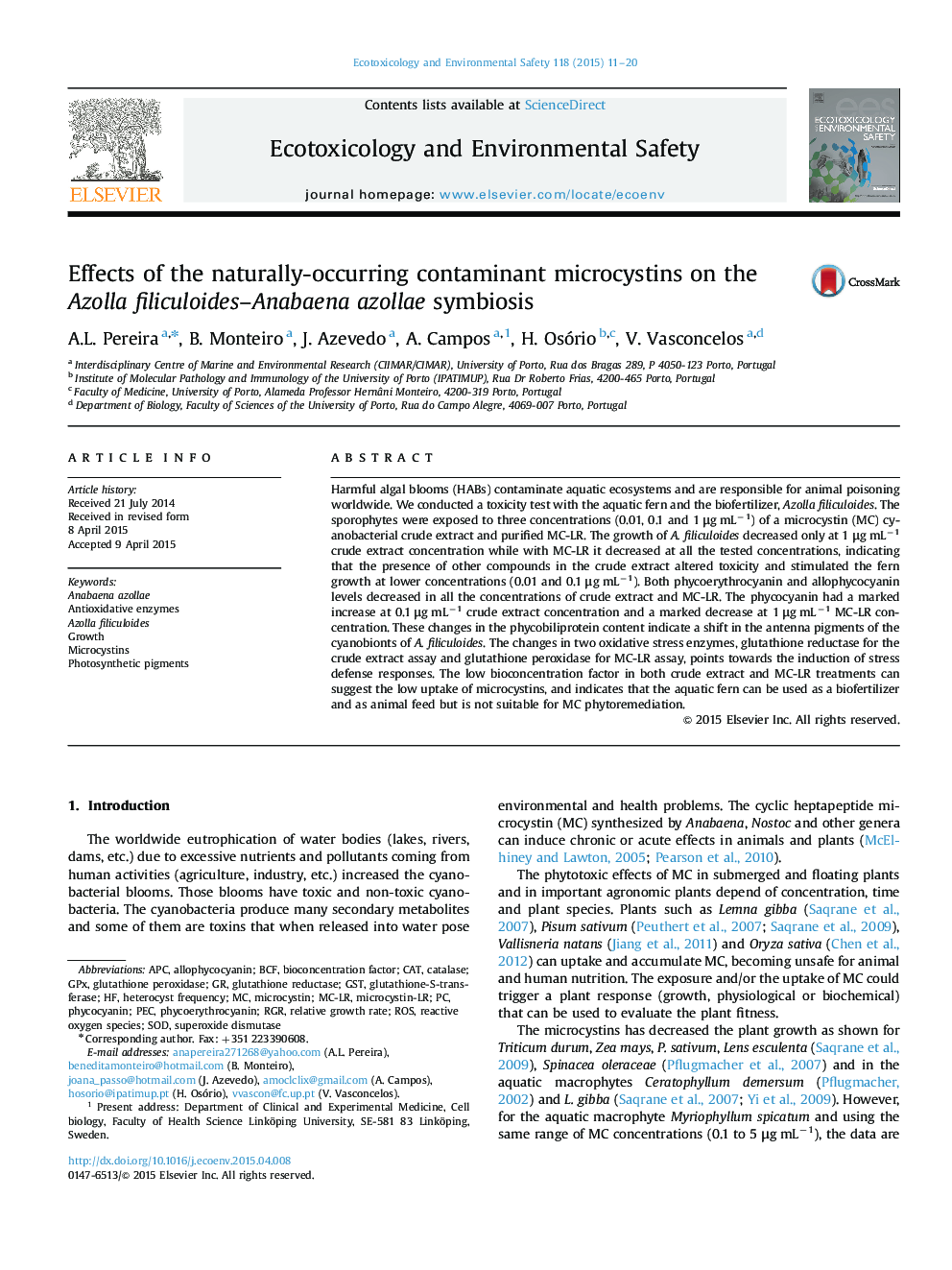| Article ID | Journal | Published Year | Pages | File Type |
|---|---|---|---|---|
| 6312088 | Ecotoxicology and Environmental Safety | 2015 | 10 Pages |
Abstract
Harmful algal blooms (HABs) contaminate aquatic ecosystems and are responsible for animal poisoning worldwide. We conducted a toxicity test with the aquatic fern and the biofertilizer, Azolla filiculoides. The sporophytes were exposed to three concentrations (0.01, 0.1 and 1 μg mLâ1) of a microcystin (MC) cyanobacterial crude extract and purified MC-LR. The growth of A. filiculoides decreased only at 1 μg mLâ1 crude extract concentration while with MC-LR it decreased at all the tested concentrations, indicating that the presence of other compounds in the crude extract altered toxicity and stimulated the fern growth at lower concentrations (0.01 and 0.1 μg mLâ1). Both phycoerythrocyanin and allophycocyanin levels decreased in all the concentrations of crude extract and MC-LR. The phycocyanin had a marked increase at 0.1 μg mLâ1 crude extract concentration and a marked decrease at 1 μg mLâ1 MC-LR concentration. These changes in the phycobiliprotein content indicate a shift in the antenna pigments of the cyanobionts of A. filiculoides. The changes in two oxidative stress enzymes, glutathione reductase for the crude extract assay and glutathione peroxidase for MC-LR assay, points towards the induction of stress defense responses. The low bioconcentration factor in both crude extract and MC-LR treatments can suggest the low uptake of microcystins, and indicates that the aquatic fern can be used as a biofertilizer and as animal feed but is not suitable for MC phytoremediation.
Keywords
GSTRGRAPCMicrocystinsBCFAzolla filiculoidesAnabaena azollaeGPXPhycocyaninCATMC-LRPECROSallophycocyaninAntioxidative enzymesGrowthPhotosynthetic pigmentsSODSuperoxide dismutasebioconcentration factorPhycoerythrocyaninMicrocystinmicrocystin-LRRelative growth rateCatalaseglutathione-S-transferaseglutathione reductaseglutathione peroxidaseReactive oxygen species
Related Topics
Life Sciences
Environmental Science
Environmental Chemistry
Authors
A.L. Pereira, B. Monteiro, J. Azevedo, A. Campos, H. Osório, V. Vasconcelos,
